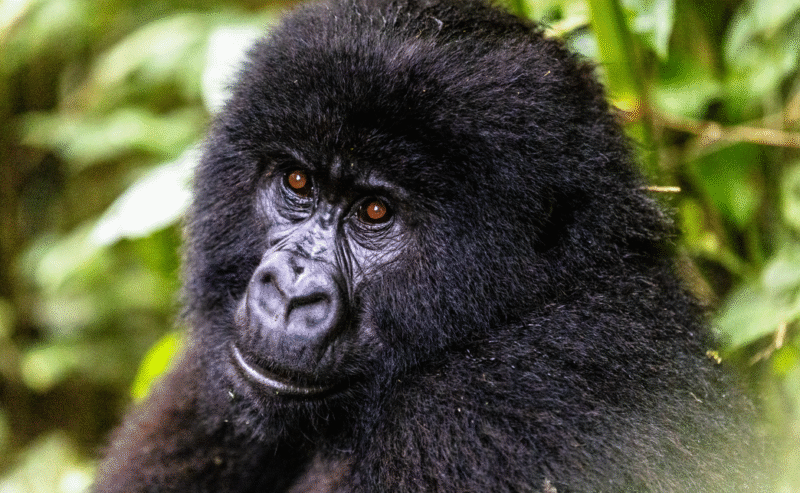
Support Virunga this Giving Season >
Four critically endangered female eastern lowland gorillas (also known as Grauer’s gorillas) rescued from the illegal wildlife trade have been reintroduced to the wild in Virunga National Park in Democratic Republic of the Congo (DRC). The gorillas will provide a critical genetic boost to a small and isolated population of eight gorillas living on Mt. Tshiaberimu. It is the largest-ever eastern lowland gorilla translocation and population reinforcement in Africa, and as a result the number of gorillas living on Mt. Tshiaberimu in Virunga National Park has increased from eight to twelve. The reintroduction is also the first time gorillas who had been living at the Gorilla Rehabilitation and Conservation Education Center (GRACE), in Kasuhgo in Eastern DRC have been rewilded.
“This complex and ambitious project to reintroduce four eastern lowland gorillas to the wild aims to prevent the extinction of the isolated population on Mt. Tshiaberimu,” said Emmanuel de Merode, director of Virunga National Park. “Following many years of preparation and extensive collaboration between Virunga National Park, local communities, and scientific experts, this is a huge milestone in efforts to bolster the eastern lowland gorilla population and we are delighted that the gorillas are successfully adapting to the wild.”
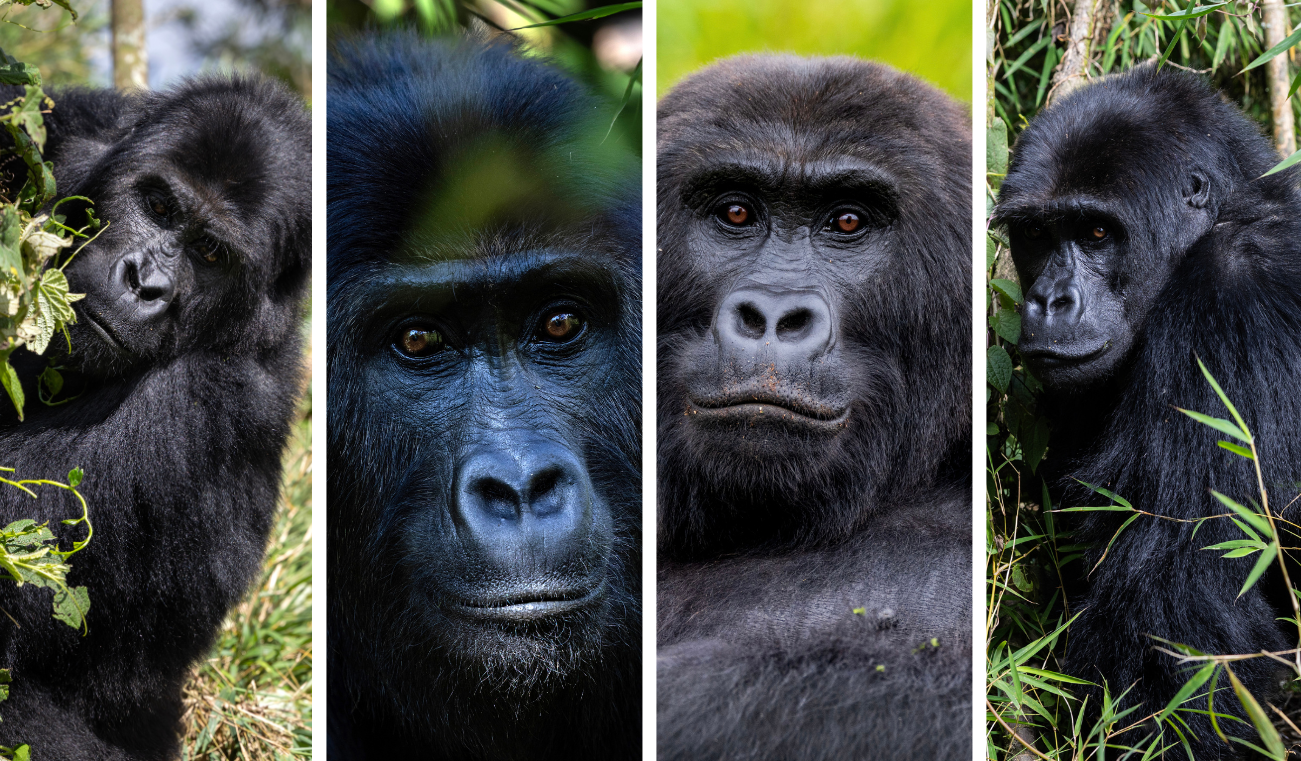 From left to right: Isangi, Lulingu, Mapendo, and Ndjingala. Photos of Isangi, Lulingu, and Ndjingala by Brent Stirton / Getty Images. Photo of Mapendo by Bobby Neptune.
From left to right: Isangi, Lulingu, Mapendo, and Ndjingala. Photos of Isangi, Lulingu, and Ndjingala by Brent Stirton / Getty Images. Photo of Mapendo by Bobby Neptune.
The translocation and population reinforcement is the culmination of a more than five-year rewilding process led by GRACE, Virunga National Park and local communities, with support from Gorilla Doctors and Re:wild. An analysis modeling different scenarios for the small population of isolated wild gorillas living on Mt. Tshiaberimu showed that they would go locally extinct within 20 years unless new gorillas were moved to the area. The gorillas —Isangi, Lulingu, Mapendo and Ndjingala— were airlifted from the GRACE sanctuary in Kasuhgo to Virunga National Park in October 2024.
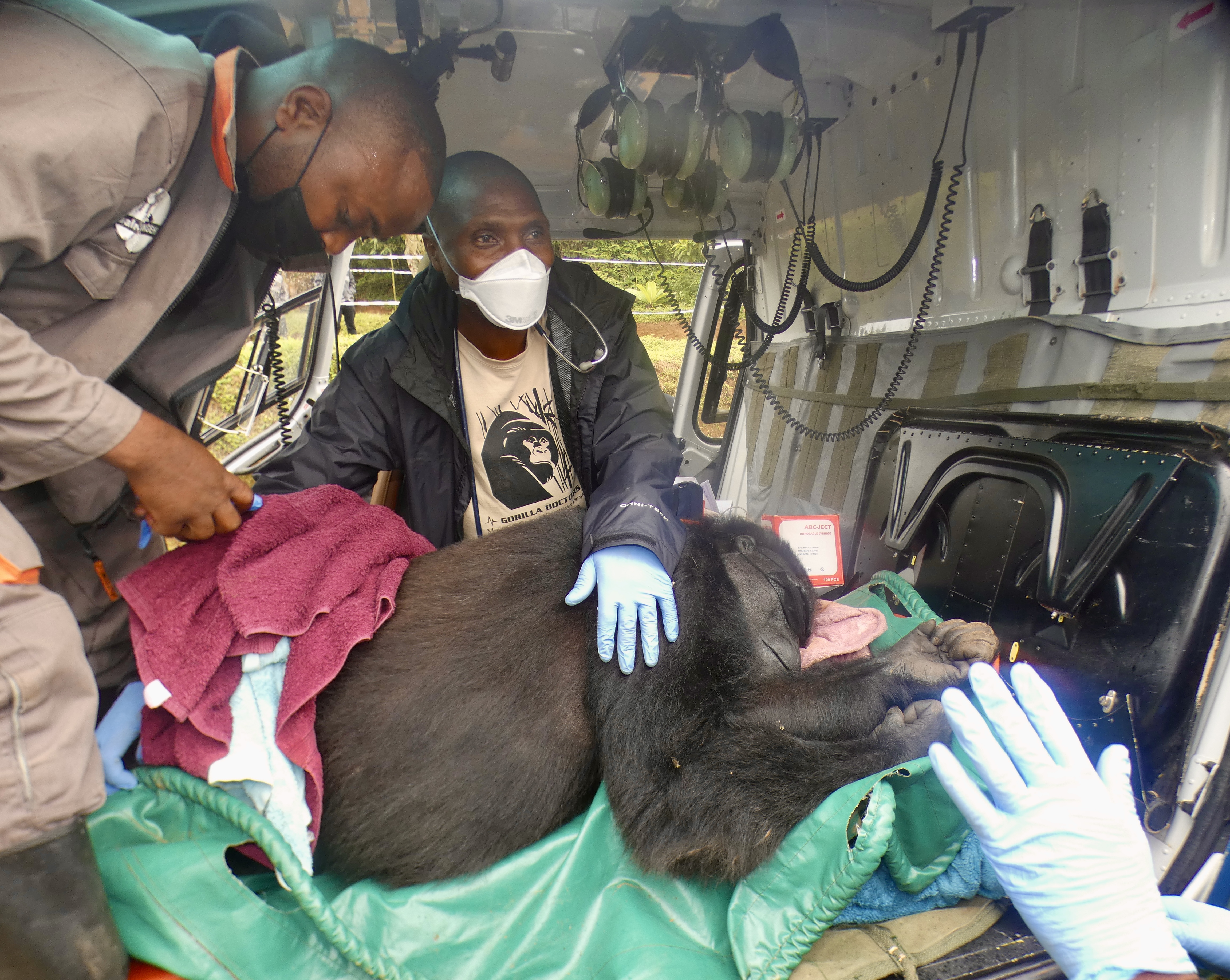 (picture by GRACE)
(picture by GRACE)
The gorillas arrived at the GRACE sanctuary between 2010 and 2016 where they lived in a 39-acre facility that allowed them to forage, socialize, climb and play as they would in the wild. A team from GRACE Gorillas, Virunga National Park and Gorilla Doctors evaluated and then selected Isangi, Lulingu, Mapendo and Ndjingala to rewild based on their behavior, reproductive health and overall health. The process followed the best practice guidelines developed by the International Union for the Conservation of Nature (IUCN) for the reintroduction of great apes.
To support their transition into the wild, Virunga National Park constructed a dedicated facility on Mount Tshiaberimu to house the gorillas. This site is located in a remote northern region of the 7,800-square-kilometer (3,000-square-mile) park. Isangi, Lulingu, Mapendo, and Ndjingala settled into the new facility on Mt. Tshiaberimu quickly – eating and sleeping normally – and their health remained stable during the move.
 (Picture by Brent Stirton / Getty Images)
(Picture by Brent Stirton / Getty Images)
“We worked closely with GRACE to monitor the health of the gorillas for several months prior to the transfer,” said Dr. Cedric Kambere Kibengo, field veterinarian for Gorilla Doctors in DRC. “We conducted physical exams and determined that the gorillas were in excellent health. They transitioned so well into their new environment that we saw almost no clinical signs of stress. Their stool was softer than normal but that may also have been related to their new diet and it resolved on its own. It is always our best outcome when veterinary care is not needed.”
The gorilla monitoring team initially expected the transition period to take anywhere between several months to several years. Since Mt. Tshiaberimu is at a much higher elevation than the GRACE sanctuary, they were unsure how much time the gorillas would need to adjust to the colder climate and eating a diet consisting only of plants that grow natively on Mt. Tshiaberimu, without supplemental nutrition.
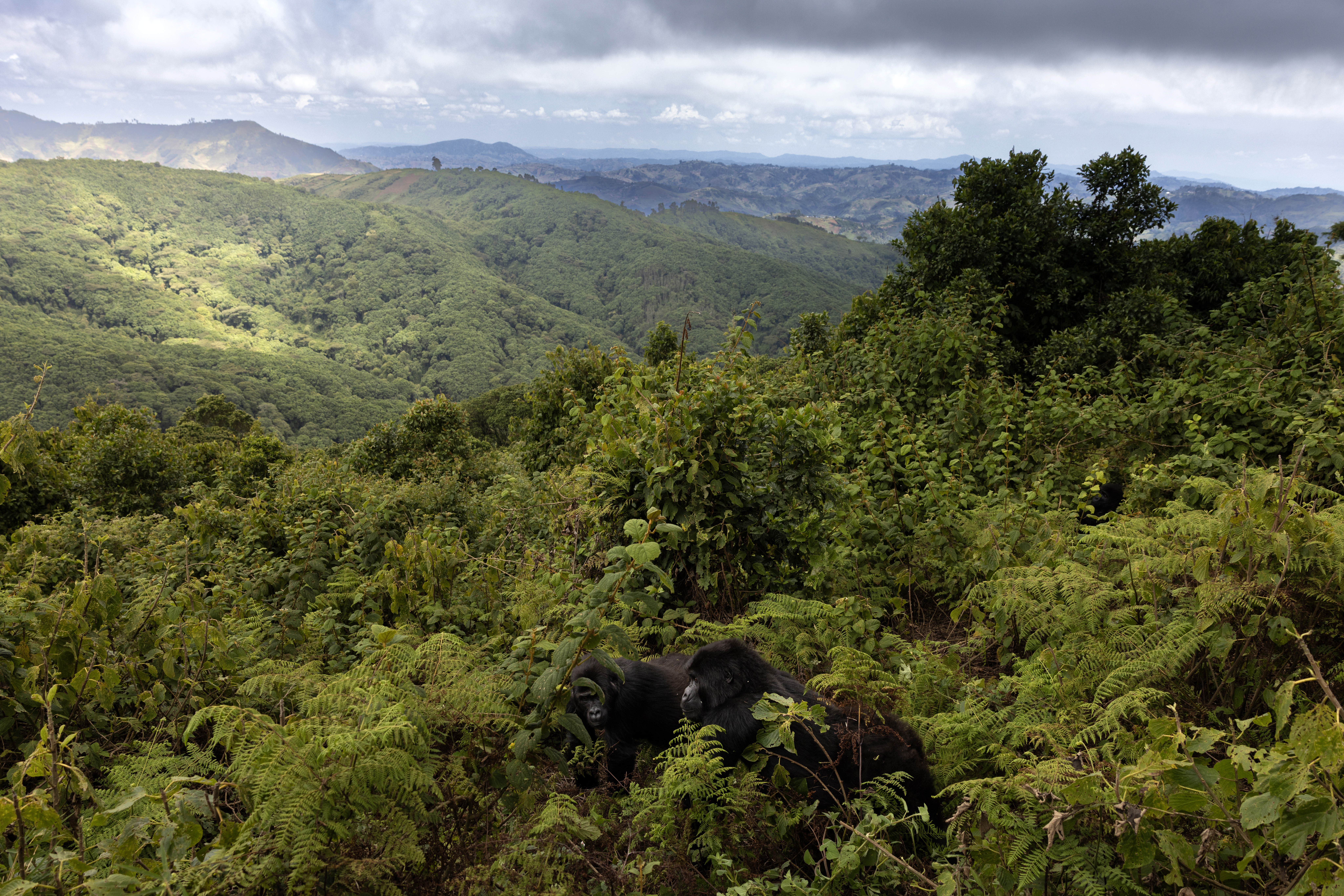 (Picture by Brent Stirton / Getty Images)
(Picture by Brent Stirton / Getty Images)
In late November 2024, a wild silverback gorilla named Mwasa began visiting the four females at the fence line of the gorilla rewilding facility on Mt. Tshiaberimu. The close visual contact was one of the major indicators that the caregivers and veterinarians had been looking for to determine if the females would potentially be accepted into a wild group.
Mwasa returned to the facility for several days in a row indicating his interest in the females by beating the ground, posturing and making vocalizations, all of which are normal behaviors for a silverback. The females displayed behaviors indicating that they were equally interested in him, including staying within his line of sight, responding to his calls, and even choosing to sleep outside their indoor enclosures to be nearer to him along the fence line.
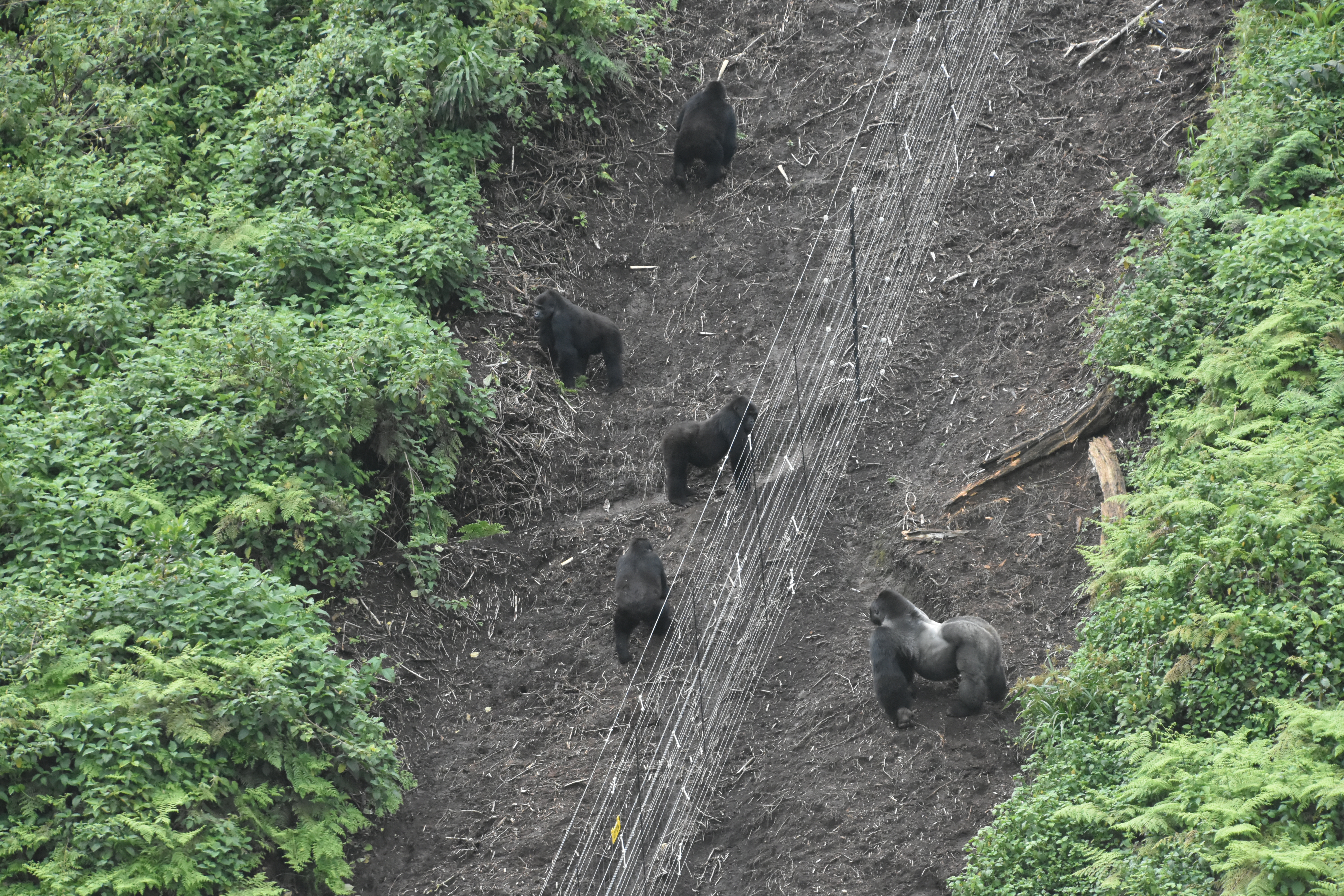 (picture by GRACE)
(picture by GRACE)
After several days of close observation, the gorilla monitoring team felt that the best decision for the gorillas was to give them the opportunity to spend time together in the wild. On December 3r, 2024, Isangi, Lulingu, Mapendo and Ndjingala voluntarily left the gorilla rewilding facility on Mt. Tshiaberimu.
“The gorillas surprised us by how quickly they wanted to leave the enclosure to go into the forest,” said Benoit Ishaba, head of gorilla monitoring on Mt. Tshiaberimu and a Ranger at Virunga National Park. “They wanted to be with the silverback and they immediately started learning from him. Within three days, they were eating plants that grow at higher altitudes that they had never eaten before, such as bamboo leaves and bamboo shoots. Now, they eat more species of plants than any gorillas on Mt. Tshiaberimu and they appear healthy.”
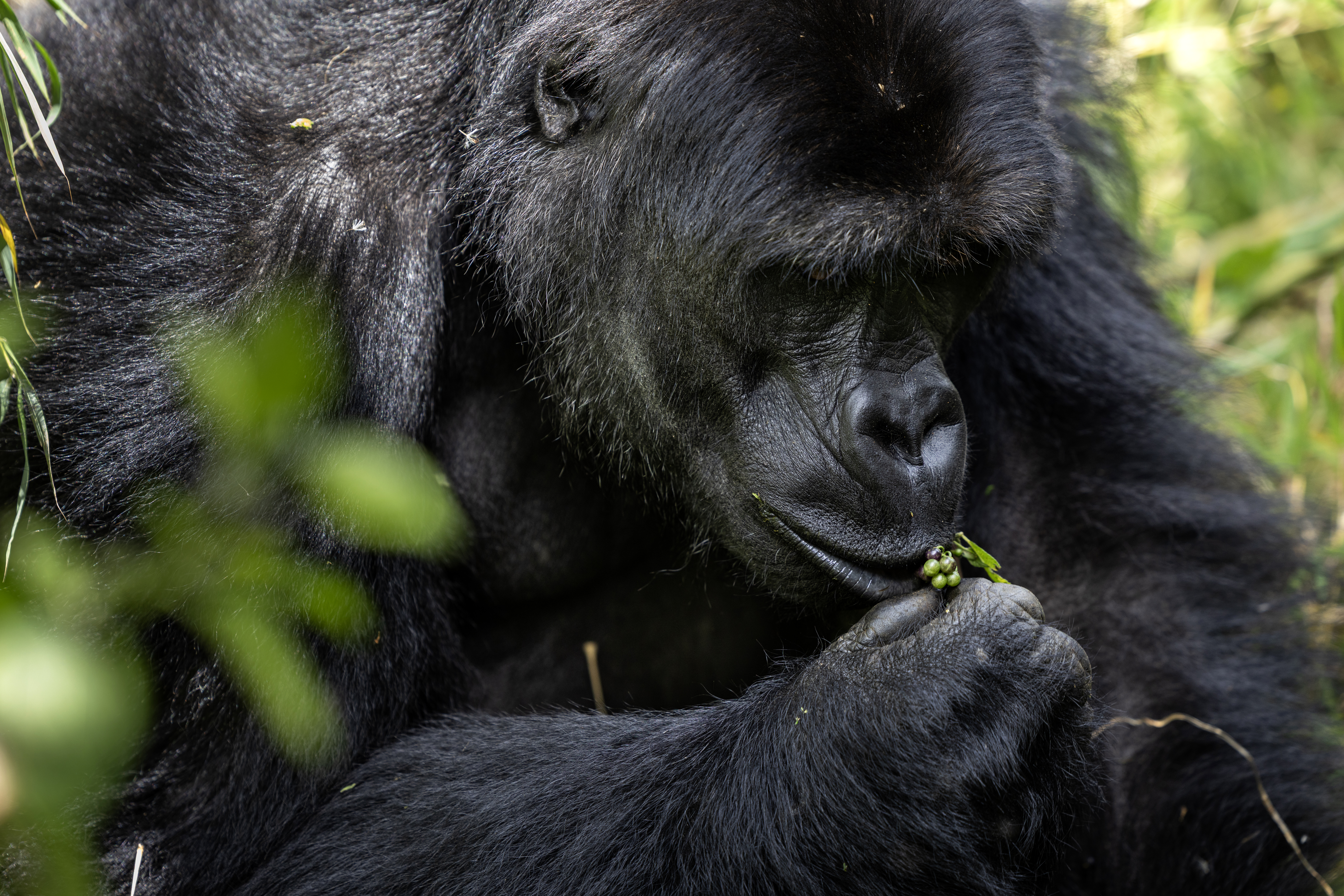 (Picture of female Ndjingala by Brent Stirton / Getty Images)
(Picture of female Ndjingala by Brent Stirton / Getty Images)
All four females are exhibiting behaviors that have made the gorilla monitoring team cautiously optimistic that they are successfully acclimating to living in the wild. The gorillas have been foraging appropriately, they have improved their nest-building skills, their coats are thick and shiny, and they have large “browse bellies” (full bellies) which is a good indicator that they are healthy. Gorilla Doctors also regularly collects non-invasive biological samples for additional health monitoring.
“Since the gorillas have transitioned back to the wild we conduct visual health assessments several times a week and collect non-invasive fecal and saliva (from chewed plants) samples to monitor their overall health,” said Dr. Eddy Kambale Syaluha, head veterinarian for Gorilla Doctors, DR Congo. “We have not had to conduct a single veterinary intervention to date. It is the vision of Gorilla Doctors to achieve thriving populations of eastern gorillas in the wild and monitoring the ongoing health of the gorillas in their new environment will move us closer to that collective vision.”
Mwasa and the females have been spending much of their time together and the gorilla monitoring team has seen him mating with Ndjingala. Gorillas have complex social dynamics and it is possible that one or several of the females may not permanently stay with Mwasa and could eventually join a different gorilla family group.
Local communities have been crucial partners in every stage of the gorilla translocation and their release to the wild. Ahead of the translocation, GRACE organized two community meetings about the plans to rewild the gorillas, sponsored conservation programs for more than 400 students at local primary schools and hosted two special community events.
Approximately 400 people participated and engaged in discussions about rewilding the gorillas, more than 50 community members visited the GRACE sanctuary in Kasugho, while 20,000 people attended community-based conservation events. GRACE also trained six caregivers, including a local traditional leader, from communities around Mt. Tshiaberimu to join the gorilla monitoring team responsible for tracking the gorillas in the wild.
The gorilla population reinforcement from GRACE Gorillas to Virunga National Park was supported by the European Union, Arcus Foundation, Disney Conservation Fund, Explore.org, a direct charitable activity of the Annenberg Foundation, Margot Marsh Biodiversity Fund, QATO Foundation, and Frankfurt Zoological Society.
For press requests, please contact [email protected]
Learn More
Adopt
Buy Chocolate Gorilla